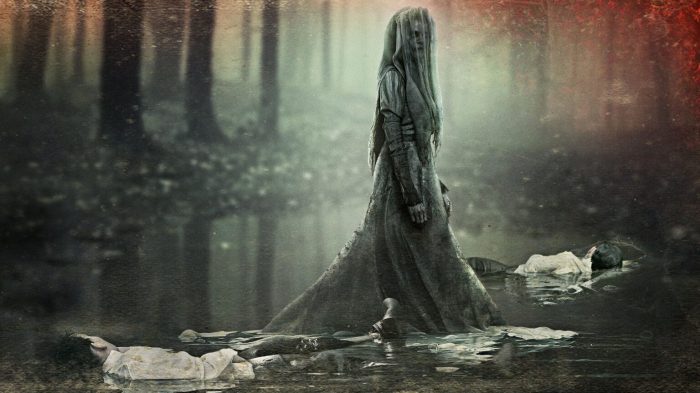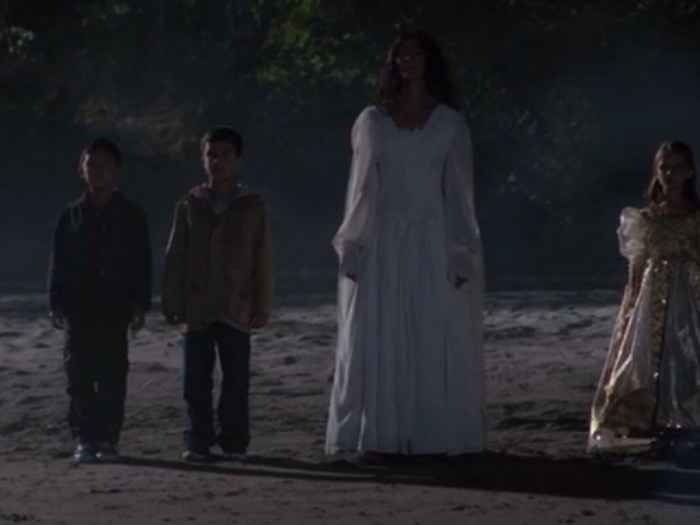Por qué la Llorona mató a sus hijos? This question has haunted and captivated generations, inspiring countless tales and interpretations of the tragic legend of La Llorona. This essay delves into the depths of the legend, exploring the psychological, emotional, and cultural factors that may have driven La Llorona to commit such a heinous act.
La Llorona’s story has resonated across cultures and time periods, reflecting the universal themes of grief, loss, and the complexities of human nature. Through an analysis of the legend’s origins, variations, and cultural significance, we gain insights into the societal norms and expectations that shaped La Llorona’s actions.
The Legend of La Llorona

The legend of La Llorona, the Weeping Woman, is a haunting tale that has been passed down for generations in Latin American folklore. Its origins can be traced back to pre-Columbian times, with variations found in many cultures across the region.
The most common version of the legend tells the story of a beautiful woman named Maria who drowned her children in a fit of rage and despair. After her death, her spirit is said to roam the earth, searching for her lost children and weeping inconsolably.
Cultural and Historical Significance
The legend of La Llorona has deep cultural and historical significance in Latin America. It reflects the social and economic conditions of the region, particularly the struggles faced by women and children.
The legend serves as a cautionary tale about the dangers of anger, jealousy, and despair. It also highlights the importance of family and the devastating consequences of violence against children.
Motives for Killing Her Children: Por Qué La Llorona Mató A Sus Hijos

There are many theories about what drove La Llorona to kill her children. Some believe that she was driven by grief and anger after her husband abandoned her.
Others believe that she was possessed by an evil spirit or that she was simply a victim of postpartum depression. Whatever the reason, her actions were undoubtedly motivated by a deep sense of despair and desperation.
Psychological and Emotional Factors
The psychological and emotional factors that may have driven La Llorona to kill her children include:
- Grief and anger over the loss of her husband
- Postpartum depression
- Feelings of isolation and abandonment
- A desire to punish her husband
- A belief that her children would be better off dead
Cultural and Social Context
The cultural and social context of La Llorona’s story is also important to consider. In the patriarchal societies of Latin America, women were often seen as inferior to men and were expected to be subservient to their husbands.
La Llorona’s actions can be seen as a form of rebellion against this oppressive system. By killing her children, she was taking control of her own life and defying the expectations of society.
Societal Norms and Expectations, Por qué la llorona mató a sus hijos
The societal norms and expectations that influenced La Llorona’s behavior include:
- The expectation that women should be subservient to men
- The belief that women are responsible for the care of children
- The stigma associated with divorce and abandonment
- The lack of support for women who are struggling with mental illness
Symbolism and Interpretation

The legend of La Llorona is rich in symbolism and has been interpreted in many different ways. Some see her as a symbol of grief and loss, while others see her as a symbol of female empowerment.
Her tears are often seen as a symbol of the suffering of all women who have been wronged. Her search for her children can be seen as a metaphor for the search for meaning and purpose in life.
Cultural and Literary Interpretations
The legend of La Llorona has been interpreted in many different ways in literature, music, and film. Some of the most famous interpretations include:
- The play “La Llorona” by Mexican playwright Rodolfo Usigli
- The song “La Llorona” by Mexican singer Chavela Vargas
- The film “La Llorona” by Mexican director Guillermo del Toro
Adaptations and Cultural Impact

The legend of La Llorona has been adapted and reinterpreted in many different cultures and countries. It has been used to create stories, songs, films, and even video games.
The legend has had a profound impact on Latin American culture. It has been used to warn children about the dangers of misbehaving and to teach them about the importance of family.
Evolution of the Legend
The legend of La Llorona has evolved over time, with new elements and interpretations being added. Some of the most common adaptations include:
- The addition of new characters, such as La Llorona’s husband or her children
- Changes to the setting, such as moving the story from a rural village to a modern city
- The addition of new themes, such as environmentalism or social justice
Question Bank
What is the origin of the legend of La Llorona?
The legend of La Llorona has its roots in pre-Columbian Mesoamerican mythology, particularly among the Nahuatl-speaking peoples of central Mexico. It is believed to have originated as a cautionary tale about the dangers of infidelity and the importance of fulfilling one’s responsibilities as a parent.
Why did La Llorona kill her children?
There are various versions of the legend, but most commonly, La Llorona is said to have killed her children in a fit of anger and desperation after being abandoned by her husband. Driven by grief and madness, she drowned them in a river and then drowned herself.
What is the cultural significance of the legend of La Llorona?
The legend of La Llorona has deep cultural significance in many Latin American countries, particularly in Mexico. It serves as a reminder of the importance of family, loyalty, and the consequences of breaking societal norms. It is also seen as a symbol of the suffering and pain experienced by women who have lost their children.